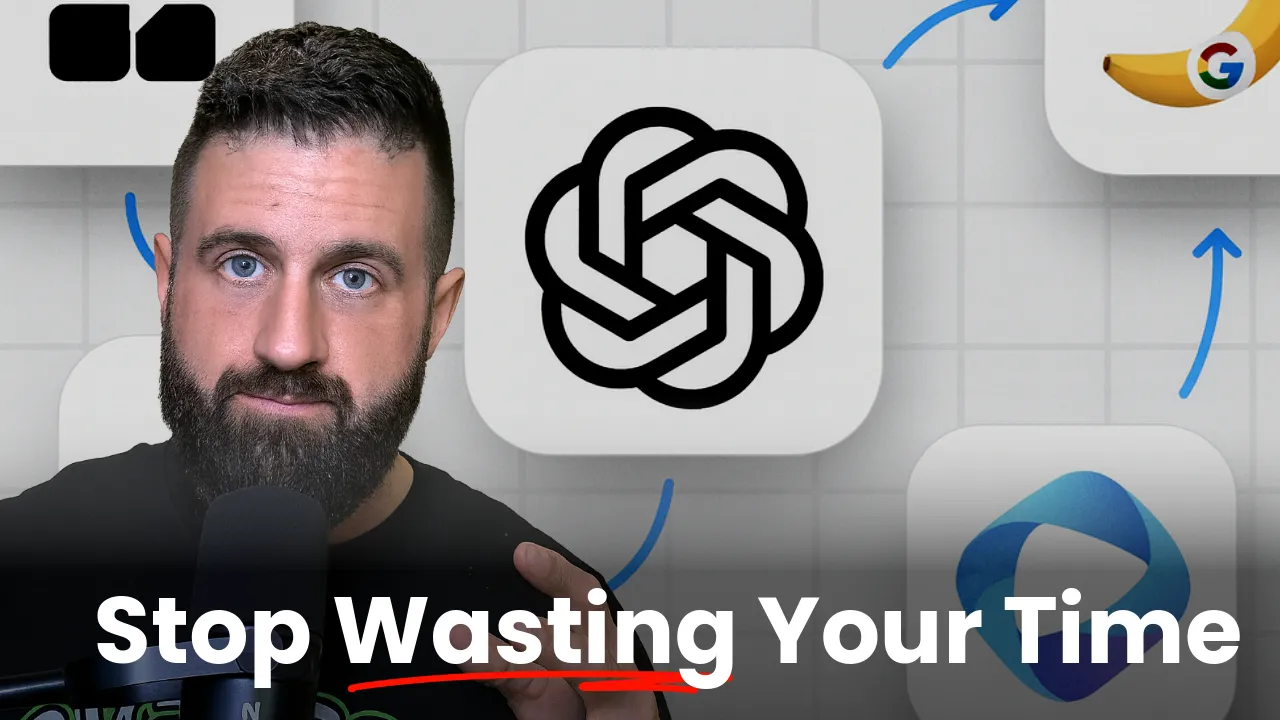How Marketing Teams Can Finally Make the Case for AI and Agentic Operations
Nov 26, 2025 | 5 min read

Every marketing team today is being crushed by the same paradox. There has never been more pressure to move fast, create more content, support more stakeholders, and push more ideas across more channels. Yet, the systems built to help marketers move quickly now slow them down. Processes have become heavier. Review cycles are longer than ever. Tools multiply instead of simplify.
And while AI hype keeps promising miracles on LinkedIn, most marketing managers still live in the same reality every morning: too many ideas, too little time, and too many systems standing between them and execution.
This blog breaks down why marketing teams feel stuck, what they actually need, and how to make a credible, tactical case for agentic AI operations inside your organization. The goal is not experimentation. It is operational efficiency. And it is the difference between being seen as a bottleneck and becoming a strategic engine again.
Execution Beats Ideas — Every Single Time
Mike begins with a blunt truth most marketers know but rarely say out loud:
Execution matters more than ideas.
You can have the best strategy, the best creative concept, the most exciting campaign plan… but if you cannot execute on it fast and clean, it means nothing.
Great ideas + mediocre execution = embarrassment.
Mediocre ideas + great execution = momentum.
This is the root cause behind the tension marketing ops teams feel every day. Stakeholders keep adding ideas mid-meeting. Projects balloon. The core priority becomes unrecognizable. A team of three is suddenly holding 18 initiatives that were never part of the original plan.
And while ideas multiply, execution slows down.
Why Content Velocity Is Collapsing
Five years ago, things really did move faster.
Today? Every layer of the marketing stack has become more complex.
A marketing manager now touches:
- CMS platforms
- Marketing automation
- Social media tools
- Analytics dashboards
- Ticketing systems
- Creative platforms
- Copywriting tools
- Legal and compliance workflows
Each system is more advanced than it was a year ago. Each comes with more configuration, more steps, and more approvals.
Add multi-step review cycles — brand, legal, compliance, product — and marketing velocity collapses under its own weight.
The wild part?
The people doing all the hands-on work are being labeled the bottleneck. They’re not slow. They’re drowning.
The Marketing Ops Reality: Overloaded, Reactive, and Under-Equipped
Most marketing managers live in a reactive state:
New requests pile in at 9 a.m.
Stakeholders ask for updates by noon.
Leadership wants to know “why it’s taking so long” by 3 p.m.
Meanwhile, AI hype on the internet makes everyone think content should take seconds, not days.
Marketing ops teams end up stuck between unrealistic expectations and limited tooling. The result is:
- Slow turnaround times
- “Why isn’t this done yet?” conversations
- Stressful relationships with reviewers
- Burnout
- Little time left for strategic work
And underneath it all is a simple truth:
The team doesn’t need more ideas. They need more time.
What Marketing Teams Actually Need (Before Any New Tools)
Forget tools for a moment. Monday morning—before buying anything—what do marketing managers truly need?
1. Time Savings
This is the foundation.
The current production cycle often looks like:
- Creative brief
- Figma design
- Draft
- Mockups
- CMS build
- Review
- Revision
- Second review
- QA
- Publish
Two weeks for a single asset is normal.
If the cycle drops from two weeks to one, the entire team feels it.
2. Fewer Review Loops
This part is rarely discussed but causes massive delays.
If content takes three or four back-and-forth cycles to get approved, you’ve lost hours. Not because of execution — because of the review process.
If you can create content that gets approved on the first pass, you cut timelines dramatically.
3. Built-In Brand Compliance
Marketers are human.
And when you’re rushing to publish a landing page in 15 minutes, it’s easy to miss a tiny brand rule buried on page 37 of a Word doc.
When those mistakes get caught in reviews, the team looks slow and sloppy — even though the real issue is that the system relies entirely on manual human accuracy.
4. Content Accuracy to Risk Tolerance
Some companies want to push the limit. Others prefer to stay far away from it.
Marketing teams need tooling that reflects their company’s tolerance for risk so they don’t constantly fight subjective, back-and-forth legal feedback.
5. Creative Leverage Capacity
This is the biggest emotional need.
Most marketing managers aren’t upset because their boss is difficult.
They’re exhausted because each day is filled with low-impact, repetitive tasks:
- Fixing lorem ipsum
- Updating snippets of copy
- Resizing images
- Publishing small CMS changes
- Duplicate page building
- Localization formatting
When these tasks consume 90% of the day, there is no room left for strategy or creativity.
AI shouldn’t replace people. AI should remove the repetitive work so people can focus on high-impact execution.
Ready to streamline your marketing operations? Speak with CI Digital today:
https://ciberspring.com/contact/
What Marketing Teams Want From AI (Even If They Don’t Say It Out Loud)
Marketing managers don’t want “AI experimentation.”
They don’t want another shiny platform.
What they want is simple:
Agents — AI systems that can execute content tasks with minimal human intervention.
Not fully autonomous.
Not hallucinating.
Not rewriting strategy.
Just practical, grounded execution help.
What those agents should do:
1. Enforce Brand Compliance in Real Time
No more relying on humans to catch every small rule violation.
The agent should check content before it ever hits review.
2. Auto-generate channel-specific variants
If you get a Figma file with an email design, you shouldn’t spend 4 hours turning it into:
- LinkedIn copy
- Twitter/X posts
- Ad variants
- Header images
- CTA blocks
- Landing page modules
The agent should generate all variants based on brand rules.
3. Low-effort CMS updates
This is the holy grail.
Imagine approving a Workfront or Jira ticket…
…and minutes later receiving a pre-prod link with the update already made.
No login.
No MFA.
No CMS learning curve.
No repetitive build steps.
For marketing managers, this alone changes everything.
4. Automated Localization at Scale
If you’re managing content in 2 languages or 20, manual localization is slow and inconsistent.
Agents should localize content automatically, then route it into review.
How to Sell an AI Pilot Internally (and Avoid Getting Shut Down)
Here’s where Mike’s transcript becomes extremely tactical.
The biggest mistake marketers make when pitching AI is trying to sell a grand vision.
Do not sell AI as a giant transformation.
Do not sell “experimentation.”
Do not promise autonomous everything.
You will lose credibility.
Instead, follow three principles:
1. Be Tactical
Start with one workflow.
A high-friction, high-visibility workflow.
Examples:
- Product page updates
- Net-new landing pages
- Website content changes
- Repetitive brand compliance checks
If you sell one clear use case and it lands, you get momentum.
2. Speak the Language of Each Internal Persona
Executives care about speed and efficiency.
Finance cares about cost reduction.
Product cares about faster go-to-market.
Legal cares about accuracy and risk.
Managers care about team morale and burnout.
One message will NOT resonate with all of them.
You need to tailor your framing to the room you’re in.
3. Position It as Operational Efficiency — NOT AI Testing
You’re not adding a shiny new tool.
You’re reducing workload, increasing quality, and preventing burnout.
A Realistic Script for Pitching Your Boss
Mike roleplays this in the transcript.
Here’s the distilled version:
Walk into your manager’s office and say:
“Over the last few weeks we’ve been under heavy pressure — multiple urgent updates, late review cycles, and pages that take too long to get live. I think we should try an AI-powered agent pilot next quarter to improve operational efficiency. We don’t need a big transformation. I propose we start small, with product page updates, where we feel the most friction. If we can reduce update time from 30 minutes to 15, and new page builds from one hour to thirty minutes, we’ll feel the impact immediately. I’d like to bring in an outside agency to help us set guardrails and measure accuracy. If it works, we can expand from there.”
This pitch is grounded, credible, realistic, and easy for leadership to say yes to.
Define Guardrails and Success Metrics Early
When you start your pilot, define:
- Success rate (example: 90% content accuracy)
- Setup guardrails
- Stakeholder responsibilities
- Workflow mirroring
- What changes and what stays the same
- What the AI agent owns vs. what humans own
- Time measurements and review cycles
If you make the changes measurable, you make the pilot defendable.
Win the First Workflow — Then Expand
Once you prove the process works for:
- Existing page updates
- New landing page builds
Then expand into:
- Press releases
- Campaign variants
- Localization
- Blog production
- Asset resizing
- Email modules
You tackle one workflow at a time until the entire marketing supply chain becomes faster and lighter.
Final Thought: The Goal Is Cultural Change
The real win is not speed.
It’s not cost savings.
It’s not even automation.
The real win is changing how marketing teams feel.
From reactive to proactive.
From bottleneck to strategic partner.
From burnout to momentum.
From battling stakeholders to building with them.
Agentic operations — when done tactically — give marketing teams back their breathing room, creativity, and confidence.
And when that happens, everything else follows.
If you want to go deeper into content workflow optimization, read our related article:
https://ciberspring.com/articles/the-2026-content-supply-chain-management-guide
If you're exploring agentic operations or need help modernizing your marketing workflows, connect with CI Digital here:
https://ciberspring.com/contact/



 Gradial
Gradial  PEGA
PEGA 




